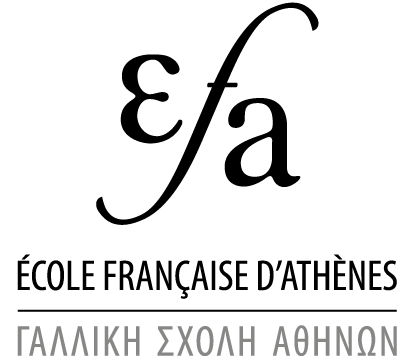
The Dessenne Building was discovered in 1960 when the West Courtyard of the Palace was being cleared with a view to organising the Minoan site at Malia for the tourists who were starting to visit it in large numbers. The excavator, André Dessenne, immediately noted the building's architectural quality: its walls had been carefully erected with blocks of blue local limestone and blocks of dressed sandstone from the quarries that line the Malian coast. Some rooms had low platforms coated in plaster, along the length of which ran channels intended to catch liquid leaking from the large storage jars kept in these 'storerooms'. Despite the importance of this discovery, André Dessenne's premature death led to the remains being abandoned, and from 1960 onwards they fell victim to vegetation growth. This abandonment was all the more to be regretted as the Dessenne Building is regularly mentioned in archaeological scholarship as one of the 'great complexes' at Malia from the Protopalatial period, perhaps the home of individuals who were especially active in the management of agricultural resources or trading enterprises, possibly with distant regions. In order to remedy this situation, a new project to study and publish the remains was begun in 2012 under the direction of Maud Devolder (Humboldt Research Fellow, Topoi-FU Berlin), by the French School at Athens. It aimed to produce a new plan of the building, to study the material that came out of the 1960 excavations, and to date the building's construction. Unfortunately, the poor state of preservation of the walls, which were threatening to collapse, made it necessary to fill the remains in.
To compensate for the remains' disappearance, a detailed 3D record of the Dessenne Building was produced by Gianluca Cantoro (I.M.S.-F.O.R.T.H.), Athos Agapiou (Cyprus University of Technology), Sylviane Déderix (University of Arizona) and Apostolos Sarris (I.M.S.-F.O.R.T.H.), as part of the POLITEIA, Action KRIPIS (MIS-448300) project (https://politeia.ims.forth.gr/). They sought to create a digital three-dimensional model, to be published online and thus made accessible to specialists and the general public. This three-dimensional digitisation was created using three techniques: 1) terrestrial lasergrammetry (or a survey by a 3D laser scanner), 2) photogrammetry based on a combination of terrestrial and aerial (low altitude) shots, and 3) a structured light sensor survey, here used on an experimental basis. These techniques produced a 3D model of the Dessenne Building, from which it is possible to extract detailed reconstructions of walls and specific spaces. They also allow the calculation of metric data like the width of a wall, its height, its volume, and the average size of its components, without having to have further recourse to the remains. They also make it possible to extract vectorial data, such as a plan or cross-sections, at various different resolutions. One of the essential objectives of the production of a three-dimensional digital model was also to make a virtual visit to the Dessenne Building available to anyone. This is now possible on the POLITEIA-KRIPIS project site, by comparing the different modelling techniques.
Photogrammetry
https://politeia.ims.forth.gr/en/malia_photogrammetric.php
Lasergrammetry
https://politeia.ims.forth.gr/en/malia_laserscan.php
Structured light sensor survey
https://politeia.ims.forth.gr/en/malia_kinectscan.php

Comparison of the 3D models created by lasergrammetry (TLS), photogrammetry and structured light sensor survey (RGB-D sensor) in a part of the building where it has been possible to superimpose the results of these different techniques, G. Cantoro, A. Agapiou, S. Déderix and A. Sarris.
To find out more about the research carried out by the French School at Athens at the Dessenne Building, see:
https://www.efa.gr/index.php/fr/recherche/sites-de-fouilles/crete/malia/malia-recherches-en-cours/malia-le-batiment-dessenne
Authors:
Gianluca Cantoro, Athos Agapiou, Sylviane Déderix, Maud Devolder, Apostolos Sarris
